
 |
 |
 |
 |
 |
 |
 |
 |

 Geometric Multiples*
Geometric Multiples*
by Issam El-Said
Dr Keith Critchlow* wrote:
Issam El-Said's geometric
prints carry the imprint of
integrity and authenticity
as his magnificent contrib-
ution to the understanding
of the geometry of Islamic
Art.
 Allah* (detail)
Allah* (detail)
Limited edition etching
33x33cm
1982
IS033
Mushtak Parker* wrote:
His Islamic heritage he
saw as an important link
in the chain of man's
progress. Its significant
contributions in the fields
of science have been
recognised, but its
achievements in the
fields of art and design
have been greatly under
estimated.'. As revealed
by El-Said's work 'the Islamic
tradition in science and art has achieved a continuity of the common,
human heritage. The adoption and application of a geometrical method
as a unifying basis to diverse fields of self expression.' is his legacy.
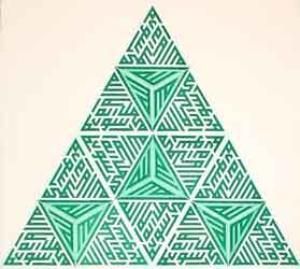 La Illaha illa Allah:
La Illaha illa Allah:
Mohammed Rassoul
Allah*
Limited edition etching
76x55cm
1982
IS 218
SOLD
Titus Burkhart* wrote:
The harmonious division of a
circle is no more than a sym-
bolic way of expressing Tawhid,
which is the metaphysical
doctrine of Divine Unity as the
source and culmination of all
diversity. The traditional
science of proportion affirms, in short, that beauty is not a matter of traditional
taste; whilst having unlimited possibilities, it has laws;it is objectively true.

 Mohammed*
Mohammed*
Limited edition etching
30x30cm
1975
IS108
In their Introduction to Geometric
Concepts in Islamic Art* Issam El-Said
an Ayse Parman wrote: The represent-
ational art did not have priority in the
Islamic culture. This caused the develop-
ment of a unifying concept of compostion
in abstract decorative art, which
transcends the physical world rather
than presenting a pictorial imitation of nature. In other civilisations the
canons of representational art, based on subjective aesthetics, prevented
the achievement of a similar unifying abstract concept between the visual
arts and other forms of artistic expression.
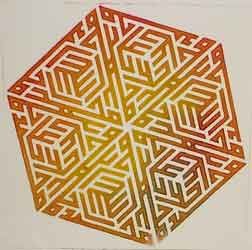 Allah, Mohammed, Ali*
Allah, Mohammed, Ali*
Limited edition etching
30x30cm
1975
IS096
Through the geometric approach to
design the systematic execution of
decorative arts, calligraphy,
architecture and the compostion of
music and Arabic poetry were unified.
The geometric method enabled the
artists to create freely yet easily and
correctly without the restrictions of a
numerical system. Perfect inter-
relationships between the parts and the
whole of the composition were attained irrespective of mode, form or scale of
expression. Hence a universality was achieve in the Islamic belief that all
creations are harmoniously inter-related. The Islamic heritage is an important
link in the chain of man's progress and in the assimilation of the Mesopotamian
and Ancient Egyptian significant contributions in the fields of science have been
recognised, but its achievements in the field of art and design have been
greatly under estimated.
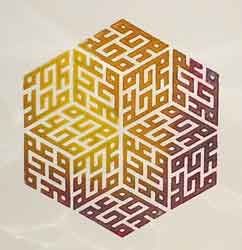 Mohammed*
Mohammed*
Limited edition etching
30x30cm
1975
IS110
In the Muslim world today, the craftsmen
engaged in making geometric patterns
in wood, marble, metal, ceramics,
etc, employ the traditional tools of
compasses and rule. The geometric
method, applied, developed and
perfected by unknown masters of the
past, is no longer a device for generating
new designs, but on for reproducing the old.
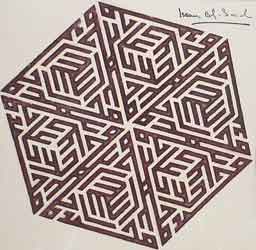 | 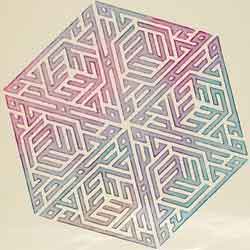 |
| Mohammed, Ali* Etching 30x30cm 1975 IS095 | Mohammed, Ali* Etching 30x30cm 1975 IS099 |
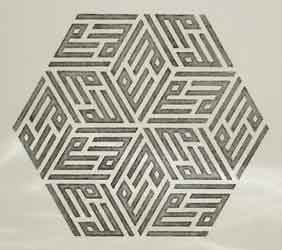 | 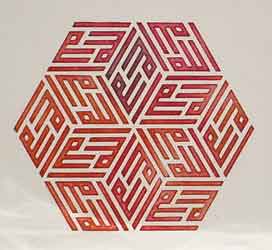 |
| Allah* Etching 30x30cm 1975 IS102 | Allah* Etching 30x30cm 1975 IS109 |

Issam El-Said was deeply concerned with Tawhid (the doctrine of Unity) and
illustrated how the shape of the repeat unit of a design is determined by use of
the circle. By using the principal of repetition, geometrical repetition, it becomes a metaphor for Dhikr (prayer repetition). Dr Keith Critchlow wrote that Issam El-Said's prints reflect the profound signification of the three primordial shapes: the Square, the triangle and the set of six triangles that become the hexagon. These symbolise the three domains of the material: the square, the triangle of human consciousness and the hexagon, or the mysteries of the heavenly domain to the traditionalists. By combining these shapes, which themselves only come into being because of the intrinsic inscription of their 'God nature' and unfolds in a beautiful manner that characterise multiplicity of pattern in a unified creation. Dr Critchlow went on to conclude that that the work of Issam El-Said is unique is not in question; that it directs the viewer to the Unique itself is also clear.*

 A limited edition of 200 sets of the Geometric Multiple I
A limited edition of 200 sets of the Geometric Multiple I
by Issam El-Said* was published on the occasion of the
15th century After Hijra. With this he wrote:
'Traditional Art in Islam is a geometric speculation
developed with the deepest inner logic bringing
together proportion and rhythm to attain perfect
interrelationships and the flow of the parts within the
whole of the composition. The fundamental concept
is, therefore, the creation of the repeat unit, the systematic
arrangements of which produces an over all design, e.g.
architectural forms, decorative arts, calligraphy. In Islamic Art creation
of beauty is not limited by its subjection to laws, which render the
product objectively true. In this Geometric Multiple, the unit pattern of
Kufic calligraphy about the eight pointed star is bisected to provide sixteen
repeat units in the form of tiles. The different relative arrangements produce
an unlimited range of overall designs, as illustrated inside.
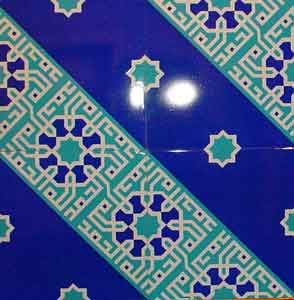 The tiles are squares of 26cm
The tiles are squares of 26cm
stove-enamelled 30g. aluminium
lacquered and boxed, altogether
weighing 2.7 kilograms. They
should be fixed on a flat surface,
e.g. a hardboard panel, by
pressing firmly after folding
back the corners of the
protective covering at the back.
They can be rearranged by gentle
lifting of the tiles, and can be
packed by recovering of the
tacky corners. It is advised not
to tear off the protective
covering from the batch, and
care should be taken not to dent
or bend these tiles. The finished
design could be framed.'
Endless patterns can be achieved by simply re-arranging the basic unit,
examples as follows:
 |  |  |
 A limited number of these exquisite boxed sets
A limited number of these exquisite boxed sets
are available for purchase. Each box contains
a Certificate signed by Issam El-Said. Please
Contact Us for further details.

 In the Square*, Issam El-Said used one motif with a
In the Square*, Issam El-Said used one motif with a
diagonal tonality. From this he achieved a beautiful
series of combinations that reveal many, unexpected,
inner and secondary patterns. Each square unit
unites two names of Allah (God) in masonry script
(Kufic) with a diagonal tonality. The following are
examples of various etching Issam El-Said produced in
1980, all of which are available for purchase. Please
contact us for further details.
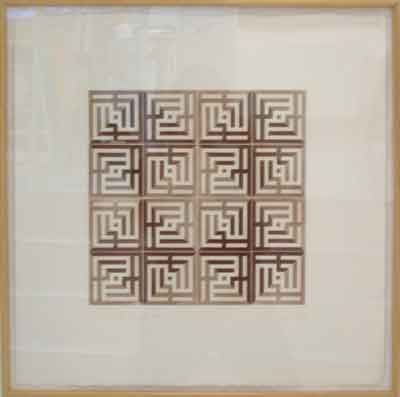 Allah (square)*
Allah (square)*
Limited edition etching
30x30cm (plate size)
1980
IS076
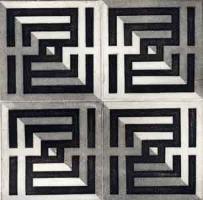 | 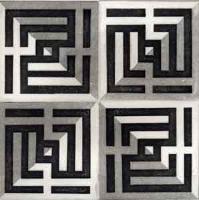 |
| IS138 | IS140 |
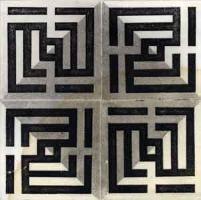 | 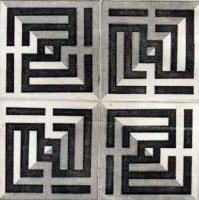 |
| IS140a | IS140b |
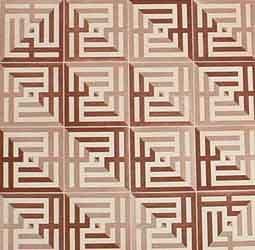 |  |
| Allah (square)* Limited edition etching 30x30cm 1980 IS032 | Allah (square)* Limited edition etching 30x30cm 1980 IS042 |
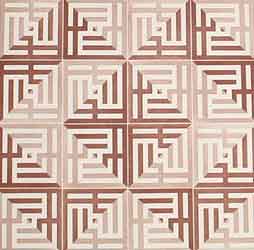 | 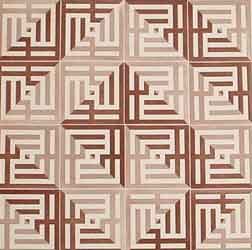 |
| Allah (square)* Limited edition etching 30x30cm 1980 IS035 | Allah (square)* Limited edition etching 30x30cm 1980 IS036 |
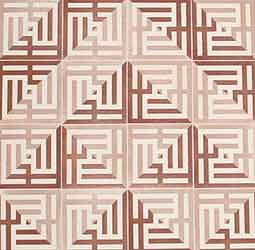 | 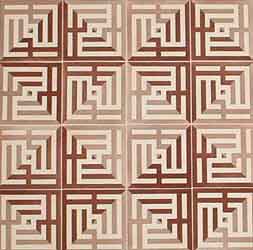 |
| Allah (square)* Limited edition etching 30x30cm 1980 IS043 | Allah (square)* Limited edition etching 30x30cm 1980 IS045 |
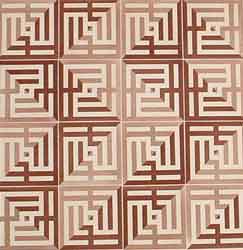 | 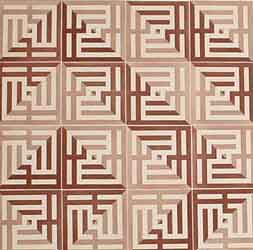 |
| Allah (square)* Limited edition etching 30x30cm 1980 IS034 | Allah (square)* Limited edition etching 30x30cm 1980 IS038 |
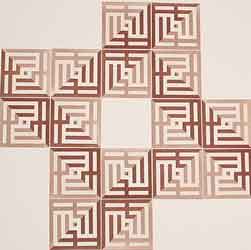 |  |
| Allah (infinity)* Limited edition etching 40x40cm 1980 IS041 | Allah (infinity)* Limited edition etching 40x40cm 1980 IS037 |
 |  | |
| Allah (rectangle)* Limited edition etching 35x46cm 1980 IS039 | Allah (rectangle)* Limited edition etching 35x46cm 1980 IS044 |

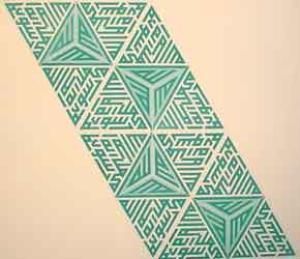 La Illaha illa Allah Mohammed
La Illaha illa Allah Mohammed
Rassoul Allah*
Limited edition etching
76x55cm
1982
IS217
In his V triangular series, Issam El-Said
achieves similar unexpected variations
as seen in these prints. In the second
triangular series, with two triangles he
combines his chosen sacred numbers and
puts twelveness and fourness together to
make the combinations sixteenness.
Understanding the inner meaning of his
numbers would need deeper knowledge,
but may well refer to the though of
Sheikh Ibn Arabi, who said in The Book of Alif 'that sign which is within each thing
and which identifies the uniqueness of God, is the uniqueness of the thing itself,
and not any other order. There is nothing in existane whether inanimate or animat,
high or low, which does not perceive the Uniqueness of its Creator, and (as this is
the case) it is necessary that it should be unique in itself.
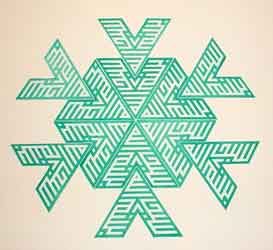 Bismillah
Bismillah
Limited ediction etching
IS219
The following patterns are further examples
using the triangle as a base unit. The art-
works (all of which are available for sale)
are 76x55cm limited edition etchings, 1982*.
For further information please contact us with
the indicated Reference Number.
 | 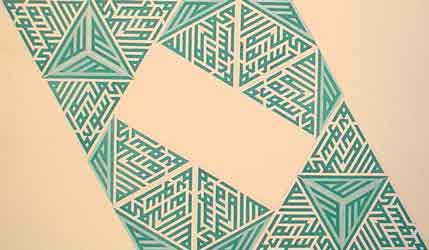 |
| IS211 | IS216 |
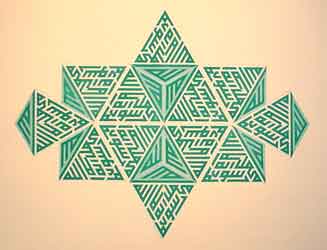 | 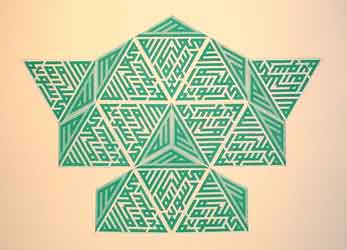 |
| IS 207 | IS 198 |
 | 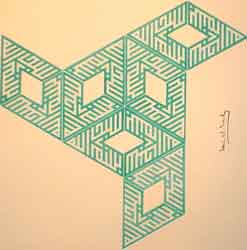 |
| IS 199 | IS 208 |
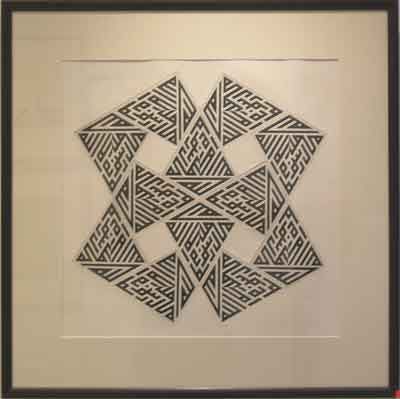 La Illaha Illa Allah,
La Illaha Illa Allah,
Mohammed Rassoul Allah
Limited edition etching
48x48cm (plate size)
circa 1982
IS162
(Illustrated on the cover of
Geometric Concepts in
Islamic Art)
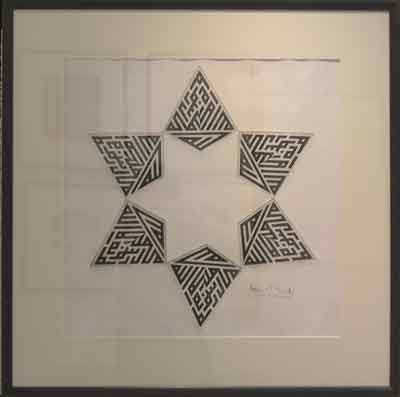 La Ilaha illa Allah,
La Ilaha illa Allah,
Mohammed Rassoul Allah*
Limited edition etching
48x48cm
circa 1982
IS153
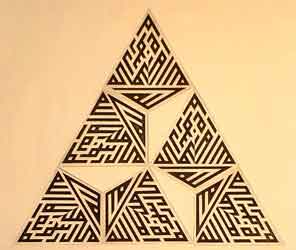 | 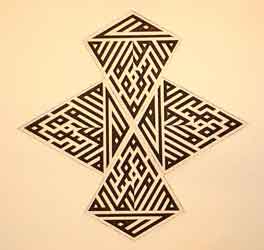 |
| IS151 | IS150 |
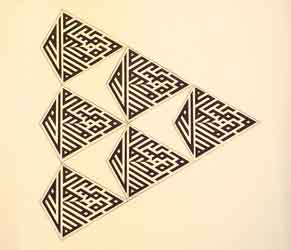 | 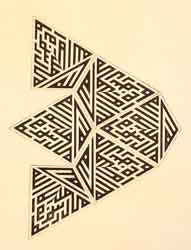 |
| IS160 | IS159 |
 |  | 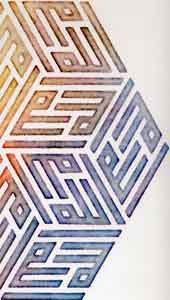 |
| Mohammed (Hexagon) detail Limited edition etching 30x30cm | Allah, Mohammed (Hexagon) detail Limited edition etching 30x30cm | Allah (Hexagon) detail Limited edition etching 30x30cm |
*The displayed text/artwork (or variations of it) is featured in the book Issam El-
Said: Artist and Scholar. To purchase the book or any of the artworks illustrated
in this website (unless otherwise indicated) please contact us.
© ayagallery 2002-15 . All rights reserved